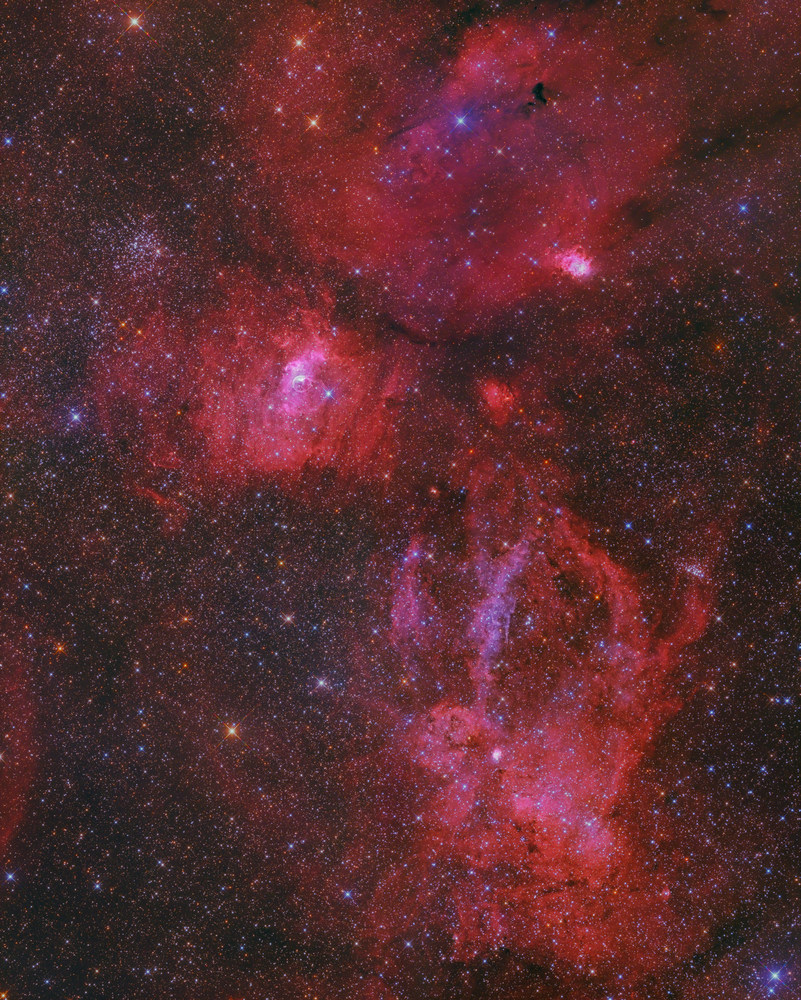Messier 52, NGC 7635 and Sh2-157 - Bubble Nebula Region

MouseOver for object identification, Click on image for a zoomable version
|
Location / Date |
Zellerndorf, August 2017 |
|
Telescope / Mount / Guiding |
ASA 10" Astrograph, ASA 3" Wynne Corrector (focal length 910mm) |
|
Camera / Exposure |
Moravian G3-16200, Astrodon filters 4-panel mosaic:
L 4 x (25 x 5min) Total exposure time: 31h |
|
Processing |
PixInsight, Fitswork, Photoshop |
|
Notes |
NGC 7635, also called the Bubble Nebula, Sharpless 162, or Caldwell 11, is a H II emission nebula in the constellation Cassiopeia. It lies close to the direction of the open cluster Messier 52. The "bubble" is created by the stellar wind from a massive hot, 8.7 magnitude young central star, SAO 20575 (BD+60°2522). The nebula is near a giant molecular cloud which contains the expansion of the bubble nebula while itself being excited by the hot central star, causing it to glow. NGC 7538 is a region of active star formation including several luminous near-IR and far-IR sources and is located in the constellation Cepheus. It is home to the biggest yet discovered protostar which is about 300 times the size of the Solar System. It is located in the Perseus Spiral Arm of the Milky Way and is probably part of the Cassiopeia OB2 complex. Sh2-157 is aweak emission nebula but of remarkable extent visible in the constellation of Cassiopeia. It is located on the Perseus Arm, one of the main spiral arms of the Milky Way, and is directly connected with the great OB Cassiopeia OB2 association . The northern part of the cloud has a ring shape due to the action of the stellar wind of several giant stars, while the southern sector is excited by the radiant light of the spectral O-stars. KjPn 8 is an unusually-shaped planetary nebula. Lopez et al.(Astrophysical Journal, 538:233-240, 2000) describes KjPn 8 as an "extreme polypolar planetary nebula with a large scale structure characterized by a giant biconical envelope". |